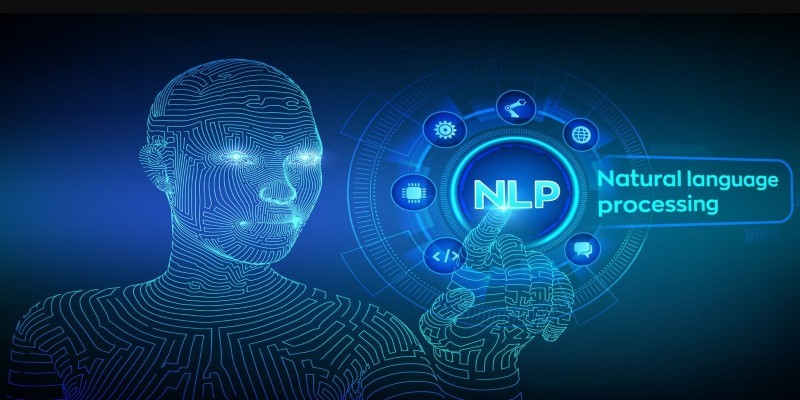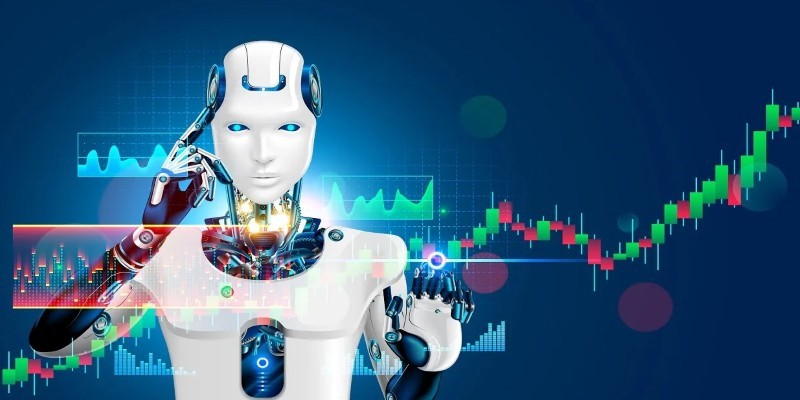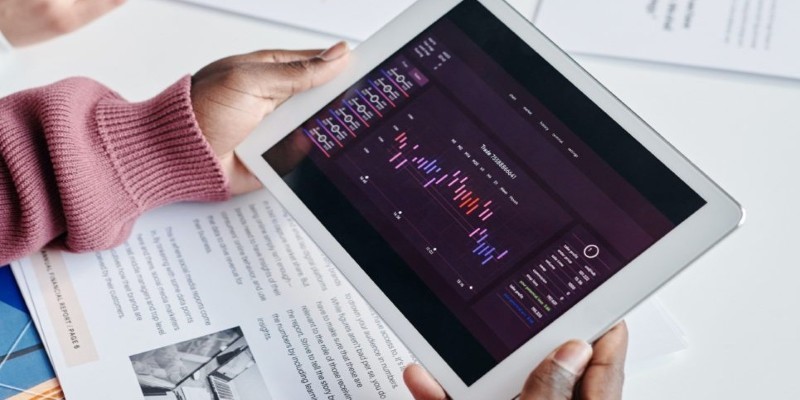Exploring AI-Driven Tools In Stock Trading Platforms
Artificial Intelligence (AI) has made significant strides in recent years, with applications spanning from healthcare to finance. In stock trading, AI has emerged as a game-changer, offering tools that aim to enhance trading platforms' efficiency, accuracy, and profitability. These AI-driven tools leverage advanced algorithms, data analysis, and predictive modelling to help traders make better-informed real-time decisions. As of 2025, the integration of AI in stock trading continues to evolve, with new tools and capabilities reshaping the way markets operate. This article delves into the different AI-driven tools in stock trading, their impact on trading strategies, and the future of this sector.
The Role Of AI In Stock Trading
AI has found its way into stock trading by automating processes traditionally done manually, such as analyzing market trends, executing trades, and managing portfolios. In the past, traders relied on their intuition, experience, and essential technical analysis tools to make decisions. Today, AI assists by processing vast amounts of data in seconds, identifying patterns that might go unnoticed by human traders.
At its core, AI in stock trading is about harnessing large datasets to extract meaningful insights. These insights can then be used to predict market movements, optimize trading strategies, and manage risk more effectively. AI-driven tools can analyze market data, economic indicators, news articles, and social media sentiments in real time, offering a more comprehensive view of the stock market than a human trader could achieve.
AI-Powered Trading Algorithms
The algorithmic trading system is one of the most common AI tools used in stock trading. It uses AI and machine learning (ML) to automate the buying and selling of stocks based on predefined criteria. These systems can execute trades at high speeds, far beyond the capacity of human traders. They rely on historical data, price trends, and market signals to decide when to enter or exit a position.

Algorithmic trading has advanced significantly since 2025. Modern AI algorithms can adapt to changing market conditions, learn from past performance, and adjust their strategies accordingly. They can also execute microsecond trades, especially in high-frequency trading environments where small price movements can lead to significant profits or losses.
AI-based trading algorithms are not limited to large institutional investors. Many retail trading platforms now offer algorithmic trading tools, allowing individual traders to benefit from the same technology that hedge funds and large trading firms use. These tools can be customized to suit various trading styles, from day trading to long-term investing.
Sentiment Analysis For Market Prediction
Another area where AI is making waves in stock trading is sentiment analysis. This technology uses natural language processing (NLP) and machine learning to analyze public sentiment surrounding a stock or the overall market. By scanning news sources, social media platforms, and financial reports, AI can determine the general mood or sentiment related to a specific asset.

Sentiment analysis has become more accurate and nuanced since 2025. AI models can now analyze not just the words used in a news article or tweet but also the tone, context, and intent behind the message. This allows traders to gain insights into how the public feels about a company or sector and predict price movements based on these sentiments.
Predictive Analytics And Machine Learning
AI's predictive analytics capabilities are another powerful tool in stock trading platforms. Machine learning models are trained to forecast future market trends, stock prices, and other financial metrics using historical data. To predict market movements, these models analyze vast quantities of structured and unstructured data, such as economic reports, company earnings, and geopolitical events.

In 2025, machine learning models have become more sophisticated, offering higher levels of accuracy in their predictions. Unlike traditional statistical models, machine learning models can continuously learn from new data and improve their forecasts over time. As markets change and new factors emerge, AI tools can adapt and provide more relevant insights.
Risk Management And Portfolio Optimization
Risk management is a critical component of stock trading, and AI-driven tools are increasingly used to enhance risk management strategies. By analyzing historical data and assessing current market conditions, AI can help traders and investors minimize potential losses by adjusting their positions or hedging against risk.

Portfolio optimization is another area where AI is making a significant impact. AI tools can analyze the performance of various assets in a portfolio and suggest adjustments based on factors like risk tolerance, market conditions, and investment goals. This level of personalized portfolio management would be difficult, if not impossible, for a human to achieve on their own.
In 2025, many robo-advisors and AI-powered platforms offer automated portfolio management. These platforms use AI to recommend investments that align with an individual's financial goals and risk preferences. As the technology improves, these platforms will become even more efficient at managing portfolios and minimizing risk for traders and investors alike.
Automation And Trade Execution
AI-driven automation is also crucial in stock trading, particularly in executing trades at optimal times. By automating trade execution, AI tools can eliminate the delays and potential errors that can occur when a human trader places an order. This is especially valuable in fast-moving markets, where even a slight delay in executing a trade can result in significant losses.

Many stock trading platforms in 2025 offer fully automated trading systems where traders can set up parameters for buying and selling assets. Once the conditions are met, the AI executes the trade without human intervention. This not only improves the speed of trade execution but also reduces the emotional aspect of trading, which can lead to more consistent and objective decision-making.
Conclusion
AI-driven tools have already transformed the stock trading landscape, and their impact will only grow as technology advances. From algorithmic trading and sentiment analysis to predictive analytics and risk management, AI offers a range of powerful tools that help traders make better decisions and execute more efficient strategies. While challenges remain, such as ensuring transparency and managing the ethical implications of AI, the future of AI in stock trading looks promising. As 2025 unfolds, these tools will continue to evolve, providing traders with more innovative, faster, and more accurate ways to navigate the complexities of the stock market.
Latest Article
-

- Usage-based Car Insurance: is It Right for You?
-

- Are Car Insurance Add-Ons Really Worth the Extra Cost?
-

- Unforgettable Valentine's Day Gifts For Every Relationship Stage
-

- The Rise Of Green Investing In Stock Markets
-

- Understanding Fees And Charges On Trading Platforms
-

- Exploring AI-Driven Tools In Stock Trading Platforms
















